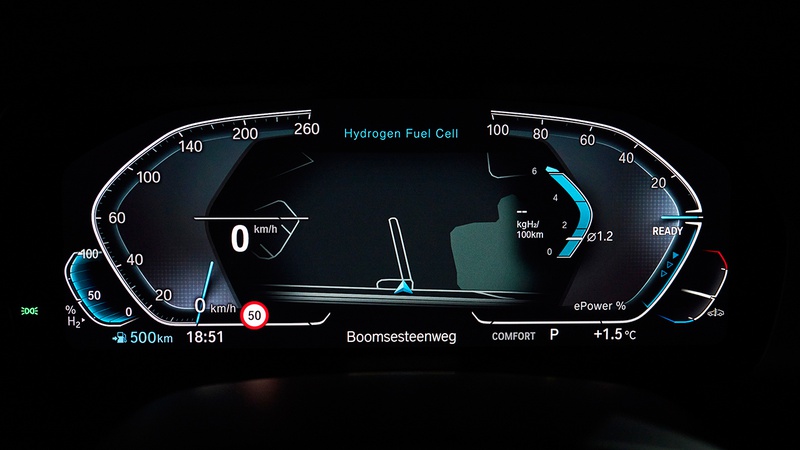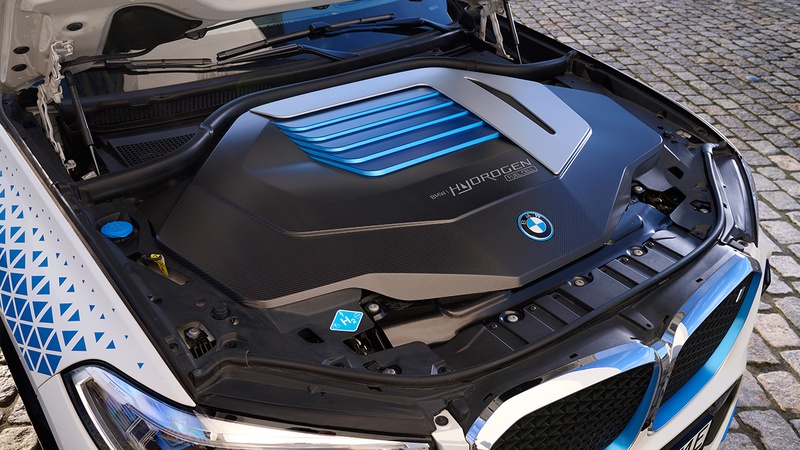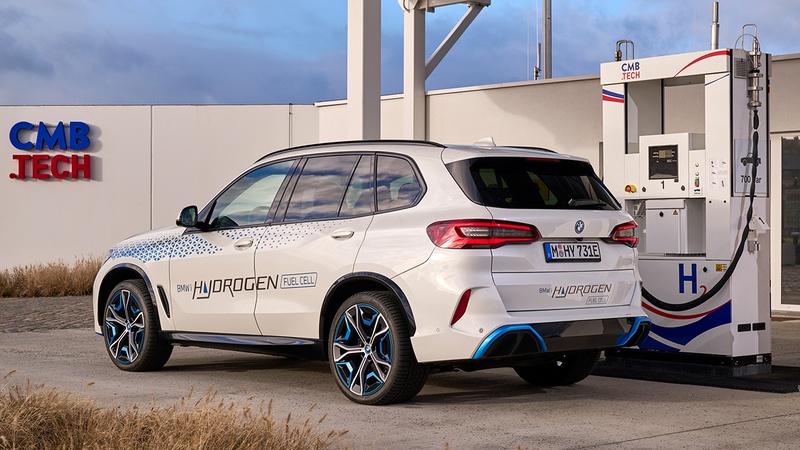The BMW iX5 Hydrogen developed on the basis of the current BMW X5 was first unveiled as a concept at the IAA show in 2019. Initial prototypes were then made available at the IAA Mobility 2021 for visitors to experience in action as shuttle vehicles.
In the new test phase, the iX5 Hydrogen becomes available to an even wider audience. As the company explained in its press release, the active driving experience will be the first opportunity for people not involved in the development process to get a first-hand look at what the BMW iX5 Hydrogen has to offer. However, it is still too early to talk about mass production or sales.
The BMW Group produces fuel cell systems for the pilot fleet at its in-house competence centre for hydrogen in Munich, Germany. This technology is one of the core elements in the BMW iX5 Hydrogen and generates a high continuous output of 125 kW/170 hp.







BMW iX5 Hydrogen
A chemical reaction takes place in the fuel cell between gaseous hydrogen from the tanks and oxygen from the air. Maintaining a steady supply of both elements to the fuel cell’s membrane is of crucial importance for the drive system’s efficiency. In addition to the technological equivalents of features found on combustion engines, such as charge air coolers, air filters, control units and sensors, the BMW Group also developed special hydrogen components for its new fuel cell system. These include the high-speed compressor with turbine and high-voltage coolant pump, for instance.
The BMW Group sources the individual fuel cells from the Toyota Motor Corporation. The two companies have enjoyed a partnership characterised by trust for many years and have been collaborating on fuel cell drive systems since 2013.


BMW iX5 Hydrogen on hydrogen refuelling station
In combination with a highly integrated drive unit using fifth-generation BMW eDrive technology (the electric motor, transmission and power electronics are grouped together in a compact housing) at the rear axle and a power battery with lithium-ion technology developed specially for this vehicle, the powertrain channels maximum output of 295kW / 401 hp onto the road. In coasting overrun and braking phases, the motor also serves as a generator, feeding energy back into a power battery.
The hydrogen needed to supply the fuel cell is stored in two 700-bar tanks made of carbon-fibre reinforced plastic (CFRP). Together these hold almost six kilograms of hydrogen, enough to give the BMW iX5 Hydrogen a range of 504 km (313 miles) in the WLTP cycle. Filling up the hydrogen tanks only takes three to four minutes.
Source: BMW

